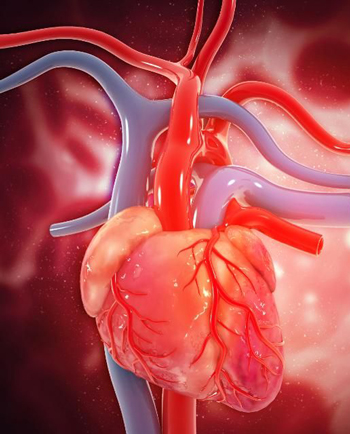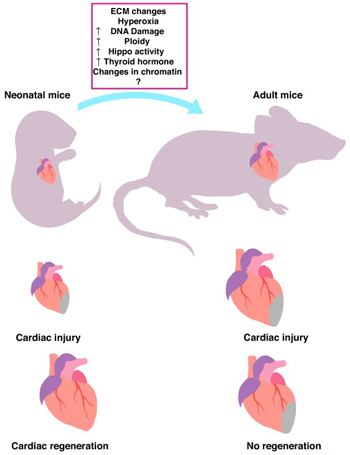Heart regeneration: scientists uncloak one of nature’s deepest secrets
The long-sought Holy Grail for heart attack patients has been a method to regenerate healthy new tissue, but the basic building blocks required to remodel an injured heart have remained elusive – until now.

Scientists at the University of Texas Southwestern have uncloaked the molecular mechanisms underlying heart regeneration in the only mammals currently known to regrow a significant portion of their hearts after injury: neonatal mice.
These newborns have long held the secret to regenerating approximately 15 percent of their ventricular tissue, a capability that occurs within a fleeting window of about seven days after birth. Once that window closes, cardiac cells mature and mice forever lose the capacity to regrow injured regions of their hearts.
The research was underway at the university’s Hamon Center for Regenerative Science and Medicine, where scientists have made a series of breakthrough findings about cardiac regeneration. Working collaboratively with another U.S. team, the Texas researchers in 2011 were first in the world to announce the animals are actually capable of regrowing a significant amount of their heart tissue. The minuscule mice reboot their hearts by regenerating new cardiomyocytes, cells responsible for the potent contractile forces of the healthy organ.
Now, in a new development, the scientists have pinpointed genes, their protein products and a cascade of cells, including macrophages from the immune system, involved in the regeneration process. The advance may provide the recipe to aid ailing human hearts one day, team members say.
“Our work provides a detailed molecular blueprint of neonatal mouse heart regeneration, and represents a rich resource for the identification of genes that may facilitate cardiac repair in the face of injury,” said Zhaoning Wang, lead author of a report on the team’s latest research published in the Proceedings of the National Academy of Sciences.
The investigation is important, Wang said, because of the implications for potential human applications. Heart disease is the leading cause of death worldwide, and once damaged, contractile cells do not regenerate. In a heart attack, an adult human heart can lose up to 1 billion cardiomyocytes because the cells are non-proliferating, which means they do not replenish themselves. Loss of cardiomyocytes leads to diminished heart contractility, scar formation and heart failure, Wang said.
By contrast, the neonatal mouse heart can efficiently regenerate healthy tissue, allowing the organ to function efficiently afterward. The animals lose the capability after the first week of life because regenerative components “undergo structural and functional maturation,” Wang said.

“The neonatal heart undergoes rapid development during the first week after birth, the regeneration time window,” said Wang, a researcher in Dr. Eric Olson’s laboratory.
“We showed that within this time window, the genes involved in heart development are active, but they are quickly attenuated when the heart exits this time window. This suggests that the neonatal heart leverages this transient developmental gene program during heart regeneration,” he said.
In other words, an injured mouse heart within the golden timeframe of life’s first few days can regenerate heart tissue because the animals still retain “an embryonic cardiogenic gene program,” that exits irretrievably after seven days.
Although broken bones can mend, and skin, hair and millions of cells are constantly replaced, no human organ other than the liver can regenerate. Outside of that ability, another noteworthy form of regeneration among humans is the capability of some very young children who regrow the tip of a finger if the nail remains intact after injury. Other species also possess dramatic powers of regeneration: Sharks constantly replace their killer teeth; spiders can replace a lost leg, and lizards reproduce most or all of a severed tail. The Mexican salamander, known as the axolotl, can spectacularly regenerate limbs and organs.
Wang and colleagues have developed one of the deepest catalogs of data on the regeneration of a mammalian heart, albeit the tiny organ of a neonatal mouse. In their research, they delved into the study of the animal’s transcriptome – the total of all messenger RNA in the mouse genome. They also analyzed histones, proteins found in the eukaryotic cell nucleus that aid in the packaging of DNA.
“The transcriptome of the neonatal heart is the entire collection of mRNAs,” Wang said. “These mRNAs carry genetic information from DNA to the direct synthesis of proteins. By studying the transcriptome we are able to directly identify genes that are expressed during heart regeneration.”
“Histones are proteins that associate with DNA to form chromatin,” he added, referring to biological material that makes up chromosomes. Histones, like transcriptomes, he said, have an influence on the molecular milieu involved in the regeneration of an injured heart.
Wang and his team made additional discoveries when comparing regenerative and non-regenerative mouse hearts over a seven-day period. They found the regenerative hearts that sustained injury developed a unique immune response.
Most prominent was the release of a factor dubbed CcL24, released by macrophages, which promotes regeneration. Also present during regeneration is the RNA-binding protein, Igf2bp3.
“We have identified CcL24 and Igfbp3 as previously uncharacterized regulators of cardiomyocyte proliferation, which may have potential therapeutic implications,” Wang said.
“By providing this resource to the field, we are hoping that it can advance… knowledge of the mechanisms of neonatal heart regeneration and lead to identification of more therapeutic targets for human heart diseases,” he said.
yogaesoteric
March 14, 2020
